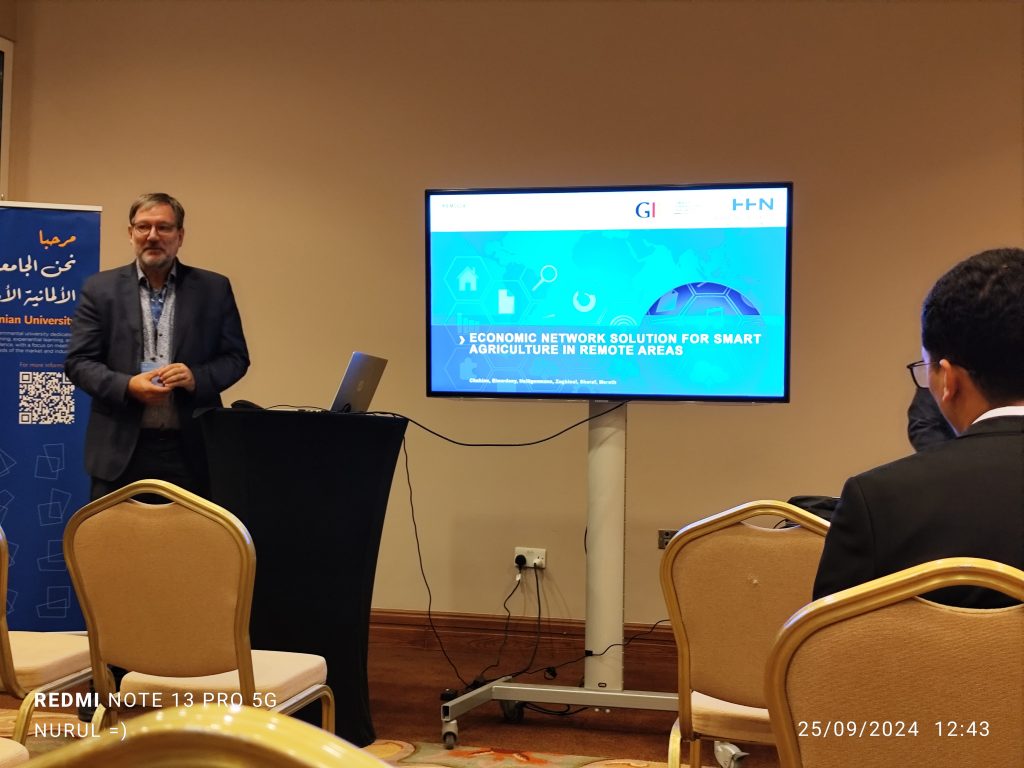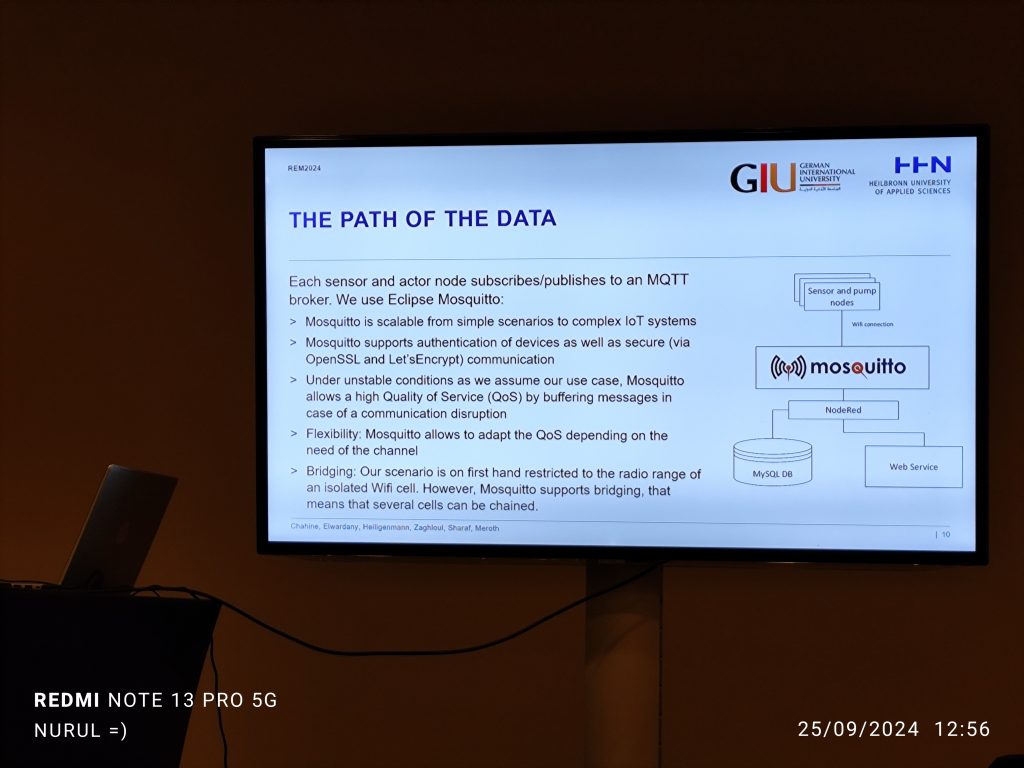I presented a paper titled “The Design and Implementation of UMP STEM Cube for Environmental Monitoring” on Day 2 of the 2024 Research and Education in Mechatronics (REM) Conference.

This paper showcases the development of the UMP STEM Cube (LilEx 3), a 1U pico-satellite designed to monitor environmental conditions, specifically focusing on air quality. Developed at the UMPSA STEM Lab in 2021, the LilEx (short for Little Explorer) represents the lab’s aspiration to create small but powerful tools for environmental monitoring. The version showcased in the paper is the third iteration, LilEx 3, which utilizes the Raspberry Pi Pico as its main processor, providing a compact yet efficient platform for onboard data handling and transmission.

The UMP STEM Cube is a prototype pico-satellite, measuring just 56mm x 85mm x 40mm, with a mission to monitor air quality and atmospheric data from space. Its primary mission focuses on recording and transmitting temperature, humidity, altitude, and atmospheric pressure data in real-time. The secondary mission involves measuring the vertical distribution of PM2.5—fine particulate matter—with the goal of identifying pollution hotspots and analysing air quality at different altitudes.
CubeSats like the LilEx 3 offer a cost-effective solution to environmental monitoring by providing data from a broader spatial perspective compared to traditional ground-based sensors. Unlike ground-based systems, CubeSats can monitor remote or inaccessible areas, making them invaluable tools for comprehensive environmental surveillance.
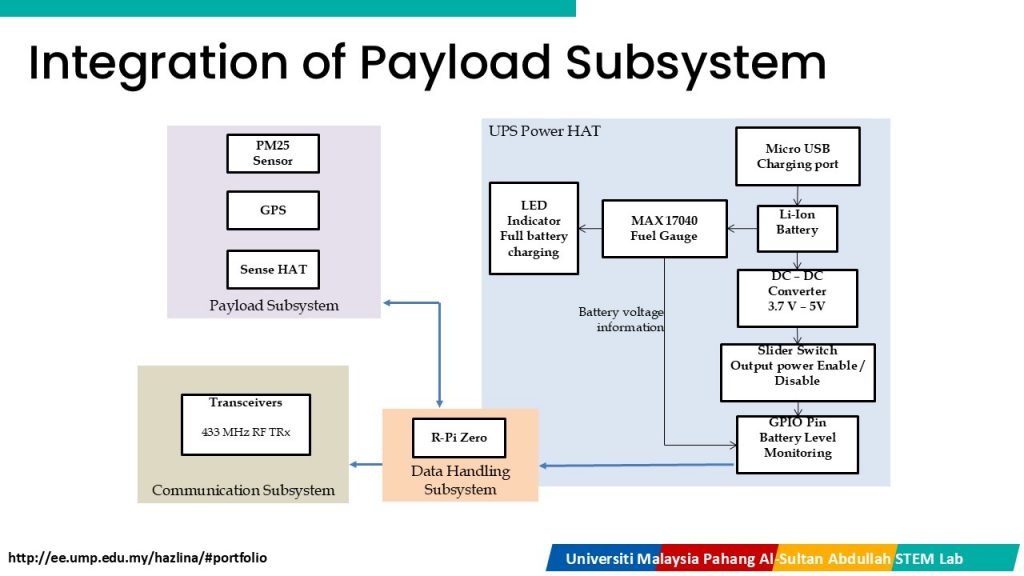
Key Features of LilEx3 include its’ modular architecture, primary sensors and an onboard HPM2.5 sensor to measures fine particulate matter.
LilEx 3 Design
The LilEx 3 houses the following key subsystems –
- A UPS Power HAT with a 1000mAh battery provides the necessary energy for the entire system. It includes overcharge and discharge protection, ensuring the system’s longevity and safety in space.
- The Raspberry Pi Pico serves as the primary processing unit. It manages data acquisition from the sensors, handles communication with the ground station, and runs flight software that controls the satellite’s mission objectives.
- The satellite communicates with a ground station using a 433 MHz RF transceiver, allowing for real-time data transmission and telemetry monitoring.
- LilEx 3 carries a PM2.5 sensor for fine particulate matter detection, which is key for air quality monitoring. Other sensors include those for measuring temperature, humidity, atmospheric pressure, and altitude.

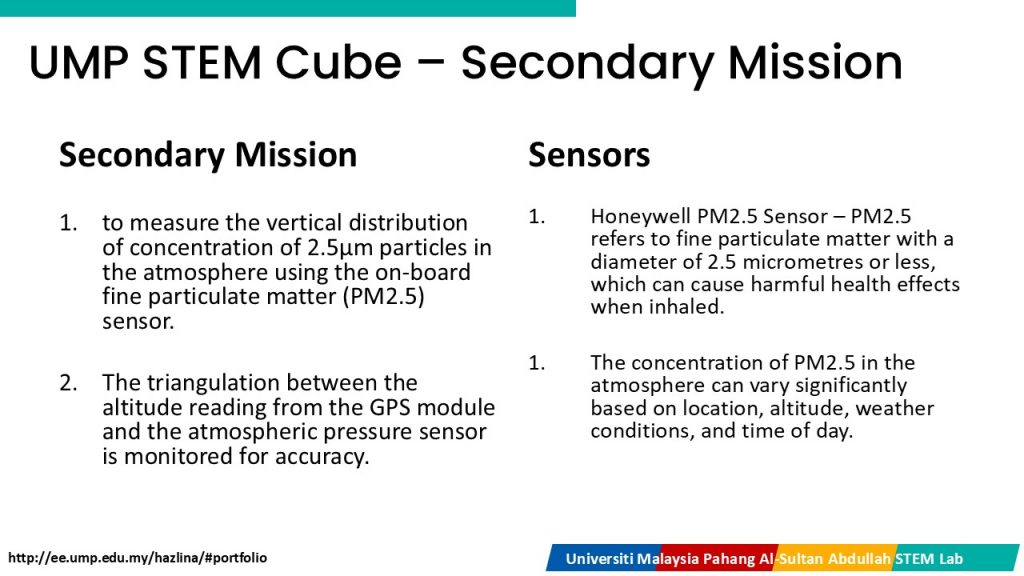
Flight Simulators
To ensure successful deployment and mission execution, LilEx 3 underwent rigorous flight simulations. These simulations were critical in testing the satellite’s ability to withstand launch conditions, deploy successfully in space, and maintain functional communication with the ground station.

Primary and Secondary Missions
The primary mission of the LilEx 3 is to monitor and transmit real-time environmental data during its descent and orbit, specifically focusing on atmospheric parameters. The main objectives include:
- Recording and transmitting data on temperature, humidity, atmospheric pressure, and altitude in real time.
- Providing live telemetry data to the ground station for sorting, analysis, and visualization.
The secondary mission is more focused and aims to track PM2.5 levels, particularly the vertical distribution of fine particulate matter in the atmosphere. This secondary mission enables:
- Monitoring of air pollution at various altitudes, providing critical data for understanding how pollutants are distributed vertically in the atmosphere.
- Forecasting pollution patterns, with data used for tracking the movement of pollution plumes and identifying pollution hotspots.
System Architecture
The architecture of LilEx 3 is designed for simplicity, modularity, and efficiency-
- A UPS Power HAT provides 5V 1.3A to the Raspberry Pi Pico and other subsystems. The power subsystem includes a battery monitoring system using the MAX17040 fuel gauge, allowing the ground station to monitor battery levels and ensure the satellite’s energy efficiency.
- The Raspberry Pi Pico is responsible for managing the sensors and logging data in real time. It processes data from the Waveshare Sense HAT (for atmospheric pressure, temperature, and humidity) and the GPS module (for location tracking). The data is tagged with mission time for accurate analysis.
- The satellite’s communication system uses the 433 MHz RF transceiver to send real-time telemetry data back to the ground station. The communication system is responsible for transmitting sensor data, satellite health status, and live telemetry.
- The PM2.5 sensor plays a critical role in measuring the concentration of fine particulate matter in the atmosphere. Data collected by the sensor is cross-referenced with altitude measurements from the GPS module to provide insights into the vertical distribution of air pollution.

Challenges in Building CubeSats – Lessons from the UMP STEM Cube
While the LilEx 3 has proven to be a successful platform for environmental monitoring, developing pico-satellites comes with significant challenges, with a better Power Management, Miniaturization of Components, better Communication, Data Handling, Structural Integrity and Durability.
Our next CubeSat mission, which will incorporate FPGA technology, aims to push the boundaries of what is possible with small satellites, InSyaAllah, enabling us to tackle even more complex environmental challenges while enhancing data processing and communication capabilities.
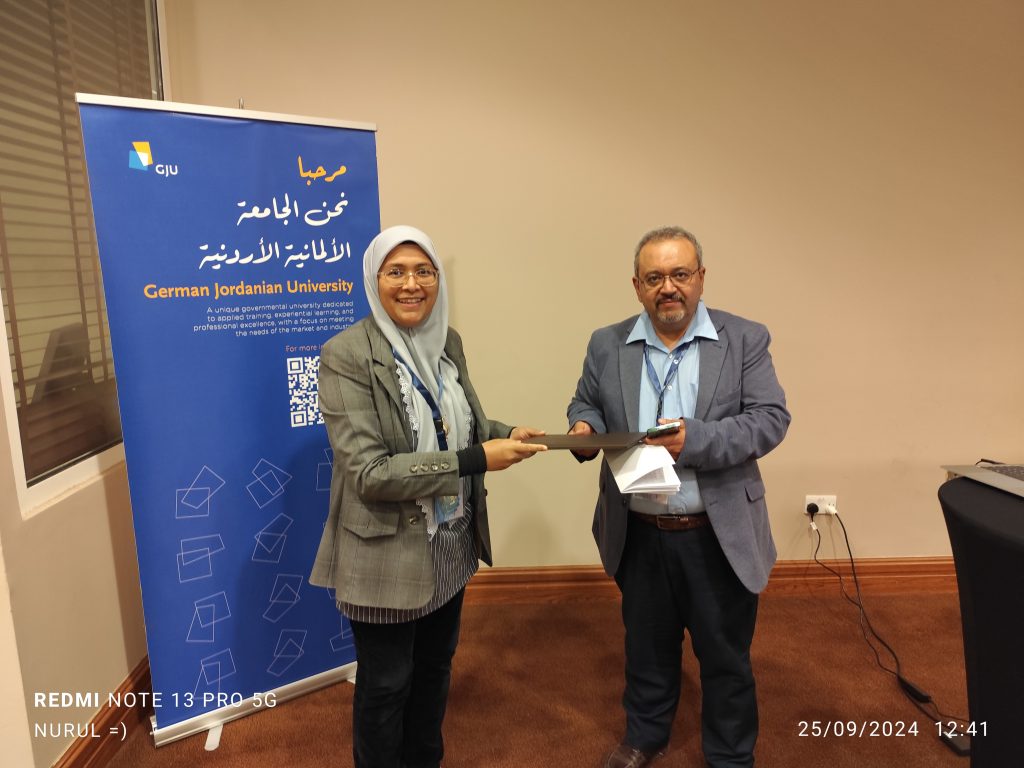

Some of the presenters on Day 2
